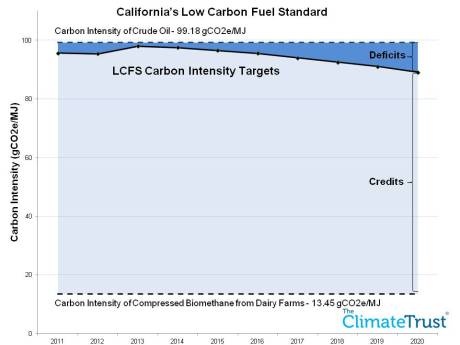I wrote the article below for The Climate Trust’s newsletter:
California’s suite of climate policies create two distinct environmental markets: a cap-and-trade market for allowances and offsets, and a Low Carbon Fuel Standard (LCFS) market for LCFS credits. Both generate significant revenues for dairy digesters, but, according to recent informal discussions, the Air Resource Board has decided that biogas projects cannot sell both at the same time. Dairy digesters whose biogas is used as transportation fuel therefore need to determine which market offers the most value. This analysis is trickier than it first appears.
Prices for both offsets and LCFS credits are reported with the same units, dollars per metric ton of carbon dioxide equivalent reduction ($/mtCO2e). The baseline from which each reduction is calculated, however, is different. Offsets are based on the methane emissions that would have occurred if the dairy had not installed a digester. LCFS credits, on the other hand, are based on the reduction from the LCFS’s annual carbon intensity target. The same dairy digester project will therefore generate a very different number of offset and LCFS credits. To determine which market offers the most value, projects need to calculate how many of each credit they could generate.





